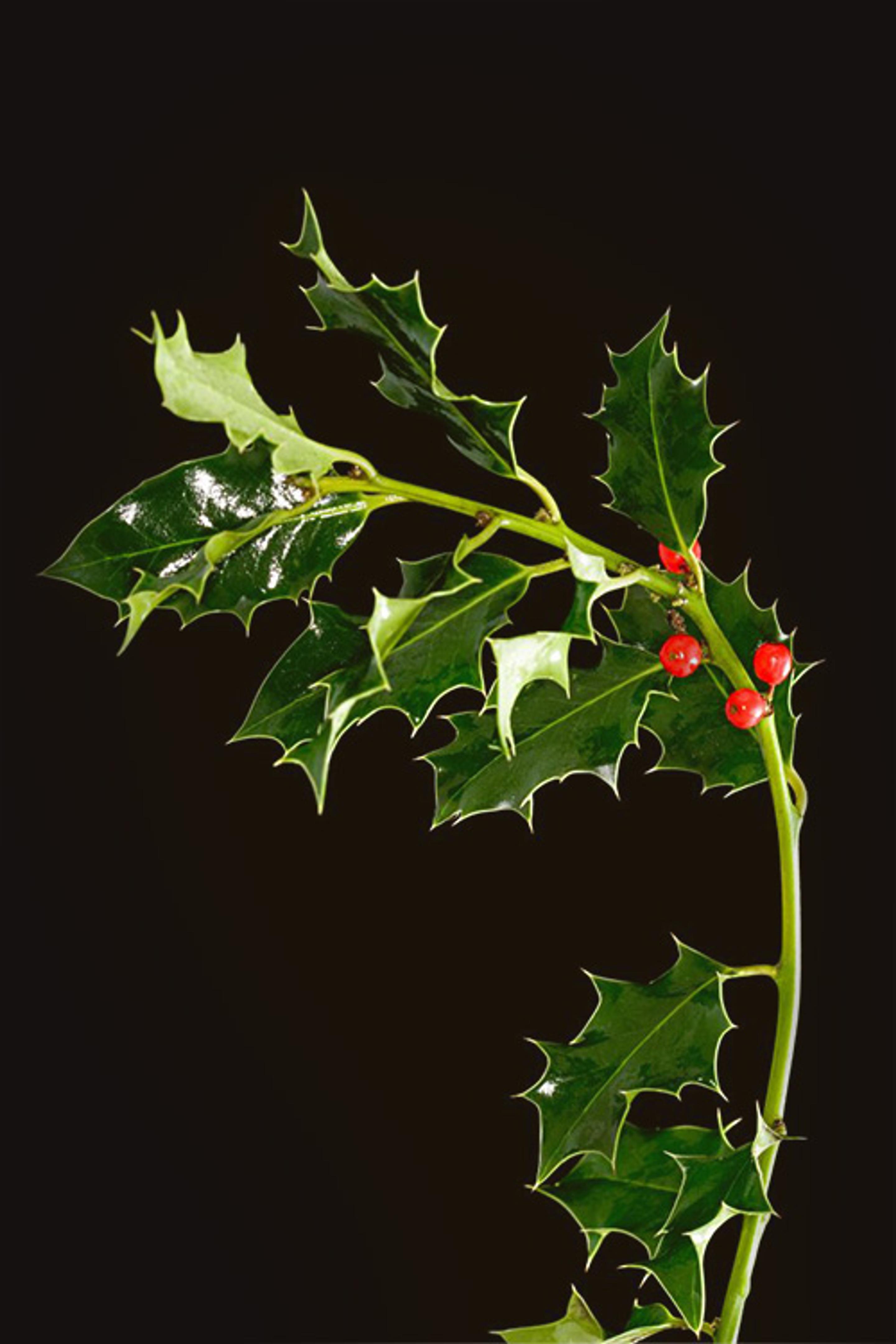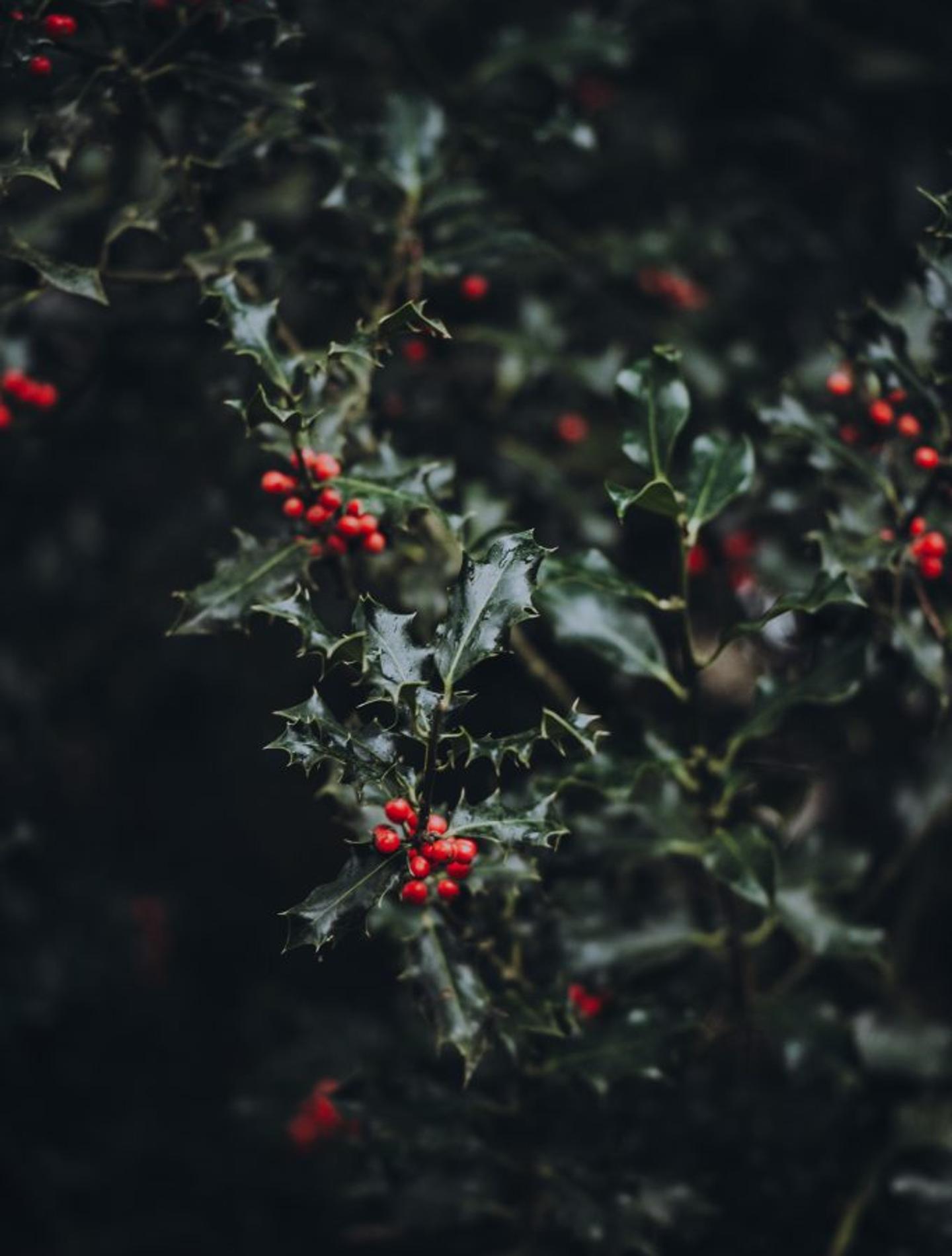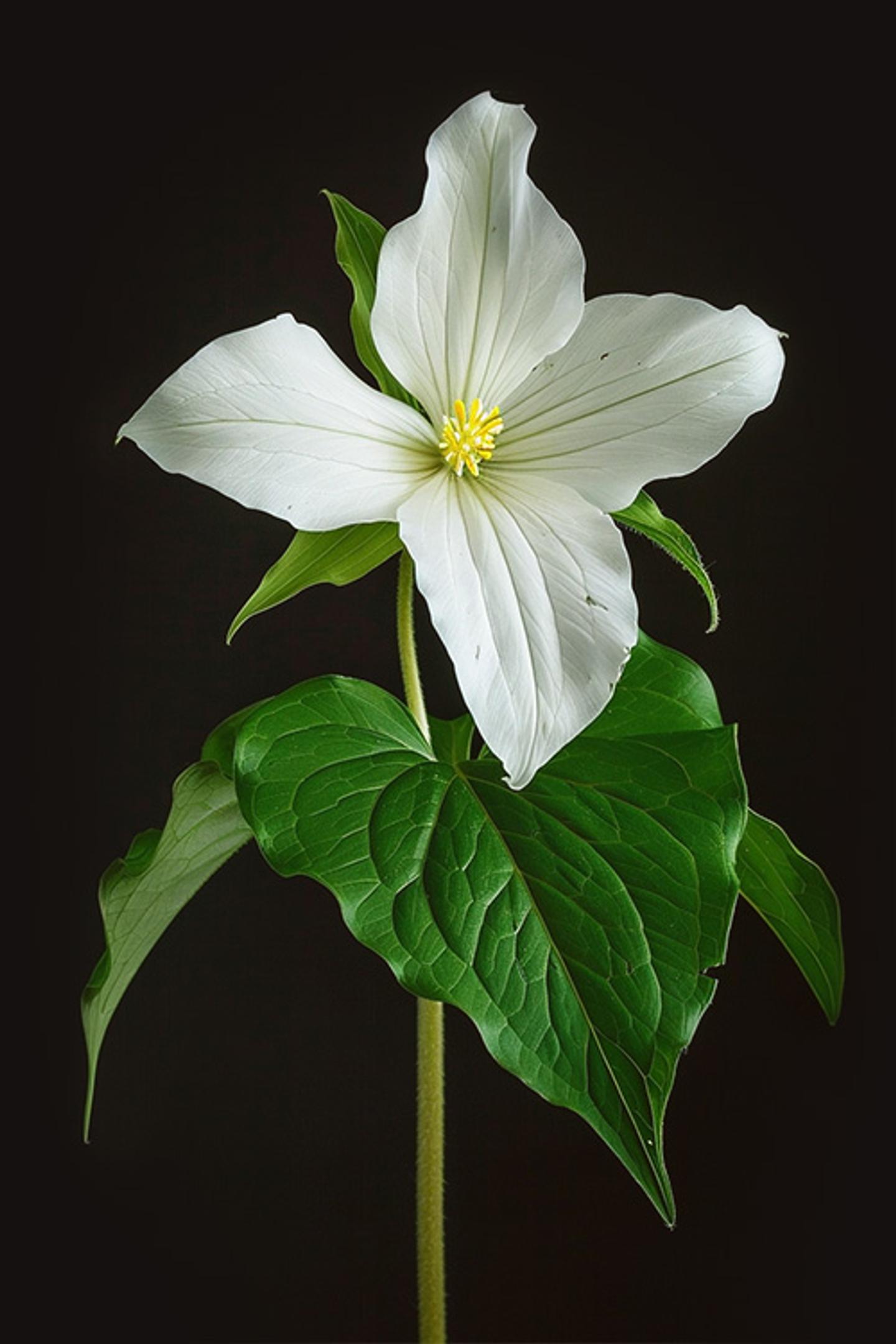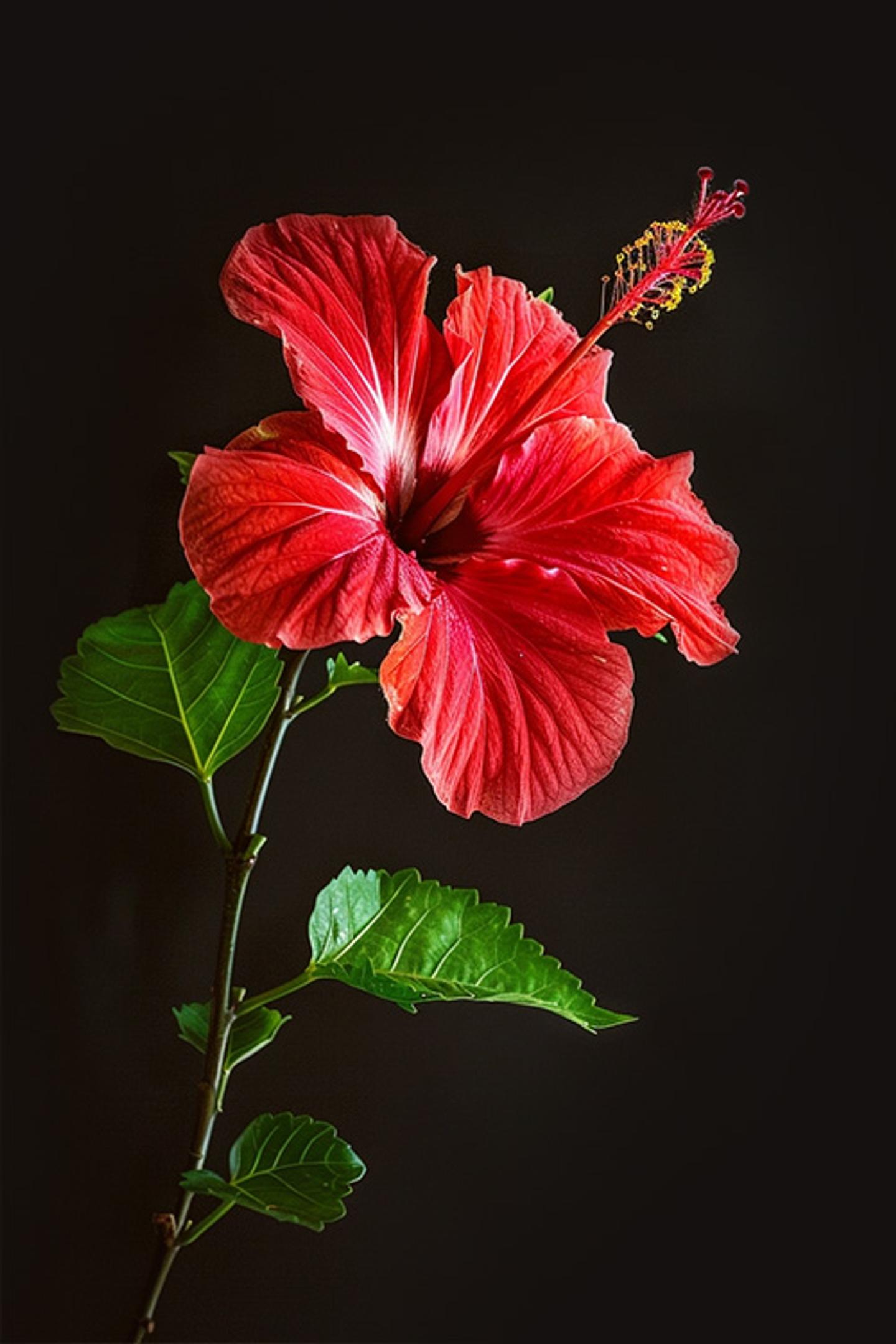Flower Meanings
Holly


The Meaning of Holly
Holly has been a dependable holiday decoration for thousands of years.
As a common part of the winter landscape, holly provided a cheap and easy way for all families to decorate for the holidays.
In terms of symbolism, holly is a huge religious symbol in many parts of the world, and has been for over 2000 years. The ancient Romans even associated holly with their Sun god, Saturn.
Some believe holly to have held a major part in the Crucifixion of Christ – not just as a reminder but as an actual physical part of the event.
It is said that holly was the type of branch used to make Jesus’ crown of thorns. Many believed the berries were actually white the day before the Crucifixion and only turned red after the blood of Christ had been spilled, eternally staining the berries red for all of eternity.
The Celtics of pre-Christian Ireland used holly abundantly. Fresh holly leaves and branches were used as decorations in ancient Celtic homes throughout the entirety of the Winter Solstice. Many believed the sprigs to have mystical powers. The Celts would place holly leaves and branches around their doors and windows throughout the winter, as they thought it would capture any evil spirits who dared to enter.
The holly’s red berries have been a well-known symbol as well. The ancient Druids believed the berries symbolized their most beloved goddess. After the Winter Solstice, the Druid priests would travel into the forests to collect mistletoe, while the Celts followed them wearing holly in their hair. [1]

"Love is like the wild rose-briar; Friendship like the holly-tree. The holly is dark when the rose-briar blooms, but which will bloom most constantly?"
Emily Bronte
The History of the Holly
Traditional holly is a known prize of the centuries.
Throughout history, its shiny green leaves, bright red berries, and supposed mythical powers have set this shrub apart from all the rest.
The berries, enjoyed by some birds and animals, are actually poisonous to humans. The wood of the holly is white, hard, and tightly-grained. It has been used abundantly for ornamental products such as furniture, riding whips, and weather- gauges.
Dried holly stems were also commonly given to cows to increase their milk production and to rabbits to restore their appetite.
Before the 1800s, a standard Christmas tree was actually a holly tree instead of the standard Douglas fir trees we see today, and were fairly inexpensive for families to get their hands on.
Many species of holly are thought to have medicinal and healing values. Crushed holly leaves given as an infusion are said to help cure bronchitis, influenza, fevers, and rheumatism. Some herbalists say fresh holly leaves can also cure jaundice and stop a runny nose.
In England, holly trees were grown in hedgerows to prevent witches from running along the hedge’s top that separated farms – yikes.
Many other ancient cultures also shared this common belief of holly being a form of protection. Others believed that throwing a spear or a stick made of holly would make animals lie down or run away. [2]
DID YOU KNOW - Holly Fun Fact
If a holly bush has berries, it’s a female plant! [3]

How to Grow Holly
If you’re looking to grow a holly shrub, it’s best to plant during the milder months of spring or fall to avoid heat or cold stress on your new plant during a crucial point of growth.
Choose a sunny or lightly shaded area with fertile, well-draining soil.
Dig a hole about 2 or 3 times wider than the root ball of the plant, but not quite as deep.
Once you remove your holly plant from its container, tease out the roots or slice the root ball in several places if it’s potbound.
Mix compost into the planting hole – bark or wood chips if the soil is alkaline or neutral to increase acidity.
Place your plant in the hole, so the top of the root ball is slightly above the soil surface, then fill the hole and tamp down the soil.
Water well, and mulch the plant to conserve moisture and keep the weeds away (don’t cover the root ball’s top!).
Feel free to use a slow-release fertilizer that’s formulated for acid-loving broadleaf evergreen shrubs. Apply in the spring and again in the fall!
Hollys usually like a moderate amount of water to keep their soil evenly moist. Water your plant thoroughly once or twice a week during hot, dry spells in the summertime. [4]
DID YOU KNOW - Holly Fun Fact
Holly’s tough, spiny leaves are often a deterrent to low browsing animals. But up top in the canopy, the leaves become less spiny. [3]

How to Care for Holly
Now onto how to keep your holly sprigs fresh after cutting!
The key to good looking, long-lasting holly is creating an environment as close to its natural habitat as possible – which is normally quite dry and cool in the December.
First things first, keep your sprigs hydrated. If you can, put them in water or mist them every day.
Keep your holly sprigs away from fireplaces, heaters, or vents, as they aren’t too keen on intense heat.
Holly has a short shelf life in general, which is why many nurseries don’t stock them until later in December. Wait until mid-month to buy them and mist them often to keep them fresh. [5]
When to Send Holly as a Gift
Why, Christmas, of course! Holly is a traditional Christmas gift and looks absolutely stunning in any fresh floral arrangement, wreath, or garland!

References:
- 1 - fantasy-ireland.com
- 2 - Nsnews
- 3 - Plant Life
- 4 - Garden Design
- 5 - LA Times
Flower Meanings — keep discovering

Gerbera Daisy
They’re sleek; they’re elegant, they’re big, bright, and fabulous. We’re talking about gerbera daisies.

Gladiolus
The gladiolus: a beautiful, proud, tall drink of water. We commonly recognize glads by their strikingly tall stalks and large, abundant blooms that grow in all sorts of vibrant colors. As the month of August’s prized flower, these blooms have a lot more to offer than just their beauty.

Great White Trillium
Trillium is a forest wildflower that is part of the lily family. Although it’s quite the stunning wild beauty, it is a little smelly. If you ever find yourself hiking your way through the Pacific Northwest, be sure to keep your eyes and nose) peeled!

Hibiscus
The ultimate tropical bloom! Hibiscus is a genus of flowering plants in the mallow family, Malvaceae, and are native to warm subtropical and tropical regions around the world!

Gerbera Daisy
They’re sleek; they’re elegant, they’re big, bright, and fabulous. We’re talking about gerbera daisies.

Gladiolus
The gladiolus: a beautiful, proud, tall drink of water. We commonly recognize glads by their strikingly tall stalks and large, abundant blooms that grow in all sorts of vibrant colors. As the month of August’s prized flower, these blooms have a lot more to offer than just their beauty.

Great White Trillium
Trillium is a forest wildflower that is part of the lily family. Although it’s quite the stunning wild beauty, it is a little smelly. If you ever find yourself hiking your way through the Pacific Northwest, be sure to keep your eyes and nose) peeled!

Hibiscus
The ultimate tropical bloom! Hibiscus is a genus of flowering plants in the mallow family, Malvaceae, and are native to warm subtropical and tropical regions around the world!
Ready to send beautiful flowers?
Our guided experience helps you send a one-of-a-kind arrangement perfect for every occasion.
Send Flowers